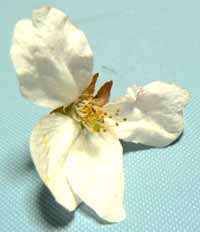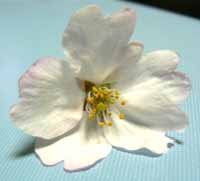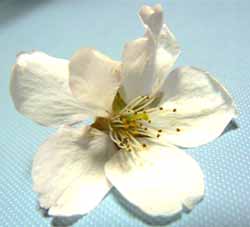Group Introduction Kariwa Women for the Protection of Life: Hi Ho! Hi Ho! … Nuke Info Tokyo No. 126
By Yukiko Kondoh*
 |
 |
 |
|
Hi! We are the Kariwa Women for the Protection of Life. Hairo! Hairo! It’s off to work we go.1
On 27 May 2001 a citizens’ referendum was held in Kariwa Village about the introduction of pluthermal2 at Tokyo Electric Power Company’s (TEPCO) Kashiwazaki-Kariwa Nuclear Power Plant. Our group started in mid May 2001, on the brink of this momentous decision, with just two women proclaiming slogans such as the following: “We reject pluthermal! We refuse to accept any more risks! We are not guinea pigs! We are not going to just stand by and watch while our land is made uninhabitable!” Pluthermal supporters had distributed leaflets signed by all sorts of groups, so we thought it was worth trying to counter that. The name of the group changed several times, while our membership increased to five women who met each week.
Thanks to the tremendous support of many many people from all over Japan, we prevented the introduction of pluthermal. The battle continued after the referendum, but on 29 August 2002 it was revealed that TEPCO had covered up problems at its nuclear power plants and in September the prior agreements for pluthermal issued by the local and prefectural governments were withdrawn. Thus the pluthermal plan was derailed.
Having achieved our immediate objective, we began to call for the elimination of nuclear power, adding the following to our official name: “Close down all nuclear power plants!!” (“Hairo!” in Japanese). We thought that the “Hairo!” call would not catch on, but it became a major theme after last year’s Chuetsu-Oki Earthquake, as a result of a statement by the Governor of Niigata Prefecture.
We are glad that it has become a major theme, but the damage from the earthquake was terrible. 4 x 108 becquerel of iodine was released from the exhaust stack of Unit 7, because they forgot to shut down the exhaust fan. Radioactivity was released to sea from Unit 6. And we suspect there were other radioactive releases. They claimed that the plant was “absolutely safe” and that “it will not release radioactivity”, but even based on these releases of radioactivity alone, we believe the plant should be closed down.
It appears that TEPCO and the Nuclear Industrial and Safety Agency would like to pretend that these radioactive releases never occurred. However, a five-year survey of cherry blossoms conducted by the Tampoposha Group revealed abnormalities. On April 11 this year four of our members went to see the cherry tree that we always visit. All the petals were clearly strange. “The deformity of these petals is terrible!” we exclaimed. It was not just the shape, but also the color and the wrinkles. Could this be the result of radiation? We began to wonder whether it was not just the cherry blossoms. Were the trees and the grasses deformed too? Were they too big? Was their color strange? We hope to observe this carefully from now on.
And we hope to close down the Kashiwazaki-Kariwa Nuclear Power Plant. Then, one after the other, we hope to close down all the nuclear power plants in Japan – not overstraining ourselves, starting from the things that we are able to do ourselves, and joining hands with people who share our feelings.
1. Demonstrators sang a bastardized version of this Disney theme song as they paraded around the streets of Kashiwazaki during the No Nukes Asia Forum in July.
2. The term ‘pluthermal’ refers to the use of plutonium in thermal reactors (i.e. light water reactors), as opposed to in fast breeder reactors. The fuel is made from a mixed oxide of plutonium and uranium (MOX).
*Yukiko Kondoh lives in Kariwa Village and is a member of the Kariwa Women for the Protection of Life.

